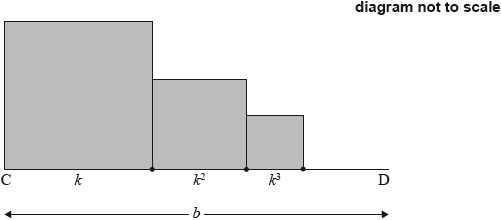| Date | May 2022 | Marks available | 5 | Reference code | 22M.1.AHL.TZ2.7 |
| Level | Additional Higher Level | Paper | Paper 1 | Time zone | Time zone 2 |
| Command term | Justify and Find | Question number | 7 | Adapted from | N/A |
Question
The sum of an infinite geometric sequence is .
The first term is more than the second term.
Find the third term. Justify your answer.
Markscheme
METHOD 1
A1
therefore
A1
substitute or solve graphically: M1
OR
or
only is possible as the sum to infinity exists R1
then
A1
METHOD 2
A1
A1
attempt to solve M1
attempting to solve both possible sequences
or
or
only is possible as the sum to infinity exists R1
A1
[5 marks]
Examiners report
Many candidates submitted quite poor attempts at this question. Many managed to state the equation obtained by considering the sum to infinity but few managed to find the second equation . Common errors in failing to obtain this equation were that “four more” meant multiplied by four or thinking that the second term was four more than the first term. Even those candidates who obtained both equations were often unable to solve them. Attempted solutions often filled the page with algebra going nowhere. Most of those candidates who actually found the third term correctly then failed to realize that there were two solutions to the equations, one of which had to be rejected. Consequently, the final “reasoning” mark was seldom awarded.



